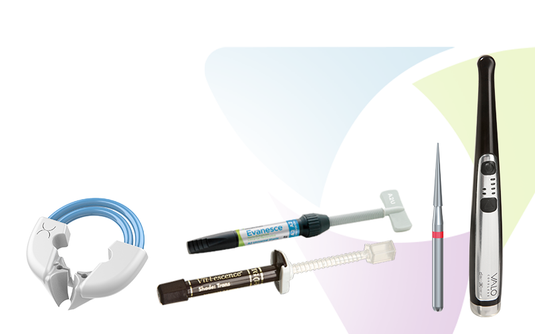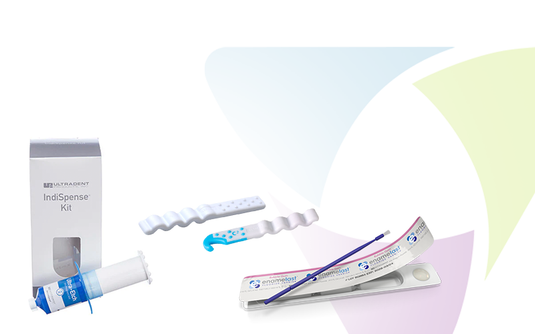
The First Step to Minimizing Chairside Risk
Contributed by Bien-Air Dental
What you don't know about aerosol spray could hurt you.
While risk management is something that dentists should probably think about and assess regularly, there is no question that the post-COVID-19 reopening is providing not just momentum, but the time to make necessary (and possibly, overdue) adjustments. With so many different aspects of clinical workflow to evaluate, there is a first step dental professionals can take that is sure to minimize risk to the dentist, team members and patients immediately. Electric handpieces are the go-to for dentists who put a premium on versatility, efficiency and a better patient experience. For clinicians who are now considering each potential purchase based on its ability to convey competence, safety and trust to patients, electric handpieces are a critical post-COVID-19 investment in both clinical excellence and risk reduction. Why?
Anti-Retraction valves are not all created equal.
Handpieces with anti-retraction valves are the safer choice for dentists. Water spray retraction occurs in every dental delivery unit when the user lifts their foot off of the foot-control; it is possible that up to 1mL of fluid will be retracted (sucked back)into the dental handpiece tubing. Simply put: Any contaminant inside the mouth will be retracted into the tubing, potentially contaminating the next patient. Since the dental handpiece tubing is not sterilizable, when a new handpiece is connected, it is also now contaminated, and just flushing the water hose for a couple minutes will not kill the viruses and bacteria absorbed into and attached to biofilms.
The anti-retraction valve is a one-way water valve that stops the backflow of water into non-sterilizable handpiece couplings and hoses attached to dental units. Most electric handpieces locate the anti-retraction valve in the micromotor, which cannot be autoclaved. Bien-Air is the only company that has fitted anti-retraction valves in the body of the handpiece, which can be sterilized between patients.
“Many European handpiece manufacturers have made provisions for anti-retraction valves as it is required by law in several European Countries. However, many of these manufactures just “comply” with the law by having anti-retraction valves in the non-sterilizable quick connect coupling,” explained Arthur Mateen, Vice President of Bien-Air USA. “It is technically very challenging to develop sterilizable anti-retraction valves fitted in the body of the handpiece. Anti-retraction valves are made of rubber like compounds that have a tendency to melt during sterilization.
Bien-Air’s commitment to a higher standard of infection control requires use of higher-grade materials and production processes to allow for repeated autoclaving without compromising the single directional water flow.
Aerosol Spray: The EVO.15 Electric Handpiece time to shine.
Aerosol spray is created when compressed air at high speed mixes with water and saliva. This plume of mist can carry bacteria or viruses present in the oral cavity—a significant concern in our current moment. The main factors that contribute to the amount of aerosol are the volume of water and the speed of the handpiece.
“When we performed side-by-side comparisons of aerosol spray patterns between air-driven high speed handpieces with water and chip air turned on and a Bien-Air electric attachment with chip air turned off, we saw a significant decrease in aerosol coverage area when using the electric attachment,” Mateen shared. “Bien-Air recommends the use of an electric attachment with limited water spray as the best option for reducing the ‘aerosol effect.’”
Electric handpieces help address both these concerns. Regarding spray, Bien-Air electric handpieces are the only electric handpieces that do not require a spray to operate and maintain acceptable operating temperatures; the limitations of competitor’s design requires water cooling for the bearings and heads so that it doesn’t get hot and negatively impact the patient. In addition, electric handpieces, by design, do not exhaust, any air backward into the handpiece tubing/delivery unit, and therefore do not contaminate any of those components.
“We were the only handpieces that could be used for long periods of time without requiring water to cool. While not a comprehensive solution, it does create the possibility for something safer,” said Daniel Call, Director of Sales for North America, Bien-Air USA. “I’m not making the claim that you can stop using irrigation, but we have the only handpiece body that would even allow for that in certain applications. If a practice was willing to have a dental assistant irrigate manually using a sterile syringe, you would produce none of the spray aerosol and not have any risk related to the exhaust. So you’ve just eliminated both of those two sources of aerosol production in the office.”
Air-Driven Handpieces Create Aerosols in Two Place:
The Spray: There is water spray used with dental handpieces in order to cool the tooth this is intraoral and creates aerosol.
The Compressed Air: Aerosol is created when chip air, mixed with water spray, combines with saliva in the mouth. Most of it is exhausted in a plume into the air. However, unless your handpiece head is completely sealed, the vacuum created by the high-speed air–spinning the rotor draws in aerosol into your handpiece head. It is then exhausted backdown into the delivery unit. Every delivery unit has traps, and at the bottom of some traps, there is gauze that very few practices are intentional about checking or replacing. The handpiece tubing and exhaust in the delivery unit is never disinfected, or sterilized.
Discover More
This article was originally published in the Clinical Life™ magazine: Fall 2020 edition
Clinical Life™ magazine is a premier periodical publication by Clinical Research Dental Supplies & Services Inc. Discover compelling clinical cases from Canadian and US dental professionals, cutting-edge techniques, product insights, and continuing education events.
Access all previous publications, request printed editions, or subscribe to our newsletter today.
Join our thriving community of dental professionals and elevate your practice to new heights!













